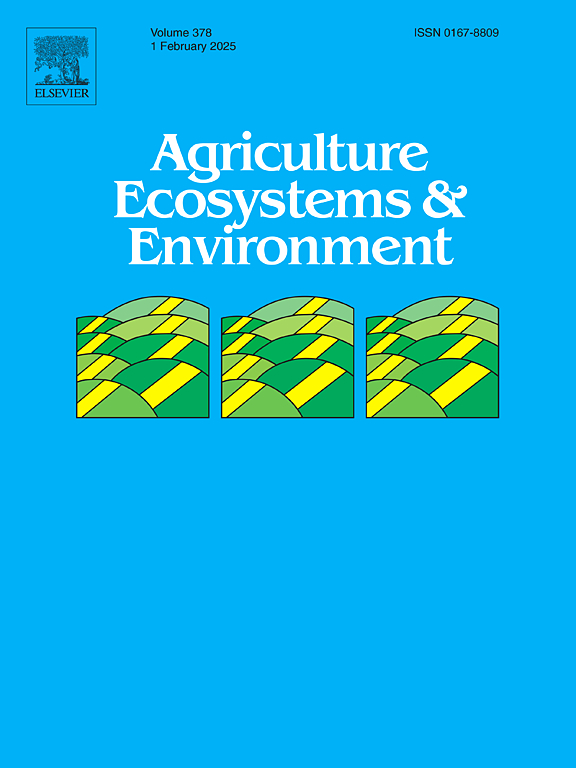Abundance of aphid natural enemies on flowering service plants is associated with aphid prey and floral resources
IF 6
1区 农林科学
Q1 AGRICULTURE, MULTIDISCIPLINARY
引用次数: 0
Abstract
Natural enemies of agricultural pests are dependent on alternative prey and floral food resources that may be scarce in intensively managed agricultural landscapes. Introduction of flowering service plants may provide food resources, but context-specific information on plant species and associated plant traits attractive and supportive to natural enemies is often lacking. Here, we assessed aphid natural enemies on 39 native and non-native service plant species in a replicated field experiment in Korla, Xinjiang, China, in 2020 and 2021. The natural enemy communities and aphid abundance on these plants were assessed using visual counts and sweepnetting. Flowering period, corolla type, and presence of extrafloral nectar on the plants were assessed as possible predictors for attractiveness to natural enemies. Gossypium hirsutum, Melilotus officinalis, Medicago sativa, Anethum graveolens, and Foeniculum vulgare were associated with relatively high natural enemy abundances, but G. hirsutum, M. officinalis and M. sativa also hosted cotton or cowpea aphids. Ladybeetles, predatory bugs and parasitoids showed positive responses to aphid densities on plants. Ladybeetle adults showed consistent positive responses to extrafloral nectar, open corollas and flowering across two years, while for other natural enemies this was only found in one out of two years. Our findings indicate that besides the provision of floral resources, aphid prey on service plants is an important characteristic that influences the attractivity of service plants to natural enemies. Service plants that host aphids that do not infest crops can therefore be useful for habitat management programs aiming to conserve and augment natural enemies.
求助全文
约1分钟内获得全文
求助全文
来源期刊

Agriculture, Ecosystems & Environment
环境科学-环境科学
CiteScore
11.70
自引率
9.10%
发文量
392
审稿时长
26 days
期刊介绍:
Agriculture, Ecosystems and Environment publishes scientific articles dealing with the interface between agroecosystems and the natural environment, specifically how agriculture influences the environment and how changes in that environment impact agroecosystems. Preference is given to papers from experimental and observational research at the field, system or landscape level, from studies that enhance our understanding of processes using data-based biophysical modelling, and papers that bridge scientific disciplines and integrate knowledge. All papers should be placed in an international or wide comparative context.
 求助内容:
求助内容: 应助结果提醒方式:
应助结果提醒方式:


